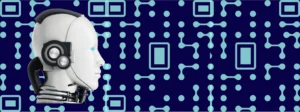Getting started in the world of programming can be both exciting and daunting. With so many programming languages to choose from, beginners often find themselves asking: which one should they learn first? We’ve delved into the discussions of seasoned developers and gathered invaluable insights to help you make an informed decision.

✅ AI Essay Writer ✅ AI Detector ✅ Plagchecker ✅ Paraphraser
✅ Summarizer ✅ Citation Generator
Key Takeaways:
- Consider Your Goals: Different programming languages have unique strengths and are suited for specific tasks. Before diving in, think about what you want to achieve. Are you interested in web development, data analysis, or perhaps game development? Tailor your language choice to align with your career aspirations.
- Ease of Learning: For beginners, a language with a gentle learning curve can make all the difference. Start with a language that is widely used and has a vast community support system. This way, you can access ample learning resources, tutorials, and forums to aid your progress.
- Practical Projects Matter: Theory is essential, but practical application is where the real learning happens. Choose a language that allows you to create exciting projects quickly. Building something tangible, like a simple website or a basic game, will keep you motivated and reinforce your understanding.
Top 3: Python, C++, and Javascript
The thread on programming language selection sparked a heated debate among users. Let’s explore some of the main arguments that emerged.
Python, the versatile and easy-to-read language, had a strong fan base among the users. Many argued that Python’s syntax resembles English, making it exceptionally beginner-friendly. One user, who works as a data analyst, highlighted how Python’s powerful libraries simplified their workflow, allowing them to extract insights from massive datasets effortlessly.
On the other side of the spectrum, C++ enthusiasts touted its efficiency and performance. They pointed out that learning C++ from the get-go could prepare beginners for dealing with lower-level languages in the future. A game developer chimed in, sharing how C++ was instrumental in optimizing their game’s performance and delivering a smooth gaming experience.
Amidst the Python and C++ talk, JavaScript supporters emerged, advocating for its ubiquity and significance in web development. With the rise of web applications and interactive websites, they stressed the importance of JavaScript for front-end development. A web developer chimed in, explaining how JavaScript’s DOM manipulation prowess revolutionized the user experience on their site.
While the debate rages on, it is essential to remember that there’s no definitive “best” programming language. Each language brings its unique advantages, and the right choice depends on your personal goals and interests. So, take the time to explore different languages, try out small projects, and see what sparks your passion. Remember, the key is to keep learning, experimenting, and adapting as you embark on this exciting coding journey.
Conclusion
In the vast landscape of programming languages, the journey begins with a single step—the step you take today to choose your first language. Consider your aspirations, the ease of learning, and the potential for practical projects. Whether you opt for the simplicity of Python, the performance of C++, or the ubiquity of JavaScript, your determination and dedication will ultimately steer you towards success. So, embrace the challenge, embrace the possibilities, and get ready to unleash your coding prowess upon the world!
Top 10 Essential Data Structures Every Programmer Should Know
As you embark on your programming journey, it’s crucial to equip yourself with a solid understanding of data structures. These are essential tools that allow you to store, organize, and manipulate data efficiently. Here’s a list of the top 10 data structures every programmer should know:
- Arrays: Arrays are one of the simplest and most fundamental data structures. They store elements of the same type in contiguous memory locations, making random access and traversal efficient.
- Linked Lists: Linked lists are dynamic data structures that consist of nodes connected through pointers. They provide flexibility in inserting and deleting elements but require sequential traversal.
- Stacks: Stacks follow the Last-In-First-Out (LIFO) principle, where the last element added is the first one to be removed. They are useful for managing function calls, parsing expressions, and solving recursive problems.
- Queues: Queues, on the other hand, adhere to the First-In-First-Out (FIFO) principle, where the first element added is the first one to be removed. They are ideal for managing tasks, scheduling, and implementing breadth-first search algorithms.
- Trees: Trees are hierarchical data structures with a root node and child nodes. They are essential for tasks like organizing hierarchical data, searching efficiently, and implementing binary search trees.
- Graphs: Graphs consist of nodes connected by edges, representing complex relationships between data points. They are vital in modeling networks, social media relationships, and solving optimization problems.
- Hash Tables: Hash tables use a hash function to map keys to values, providing fast access and retrieval. They are valuable for implementing dictionaries, caches, and frequency counters.
- Heaps: Heaps are specialized binary trees that maintain a specific order, such as the min-heap or max-heap. They are crucial for priority queues and sorting algorithms like heapsort.
- Tries: Tries, also known as prefix trees, store a dynamic set of strings, allowing efficient prefix-based searching. They are widely used in autocomplete systems and dictionaries.
- Graph Algorithms: Understanding various graph algorithms like Depth-First Search (DFS) and Breadth-First Search (BFS) is essential for solving graph-related problems and pathfinding tasks.
As you familiarize yourself with these essential data structures, remember that learning programming is an ongoing process. It’s crucial to practice and apply your knowledge to real-world scenarios. Implement these data structures in projects, solve coding challenges, and participate in programming communities to deepen your understanding.
Follow us on Reddit for more insights and updates.





Comments (0)
Welcome to A*Help comments!
We’re all about debate and discussion at A*Help.
We value the diverse opinions of users, so you may find points of view that you don’t agree with. And that’s cool. However, there are certain things we’re not OK with: attempts to manipulate our data in any way, for example, or the posting of discriminative, offensive, hateful, or disparaging material.